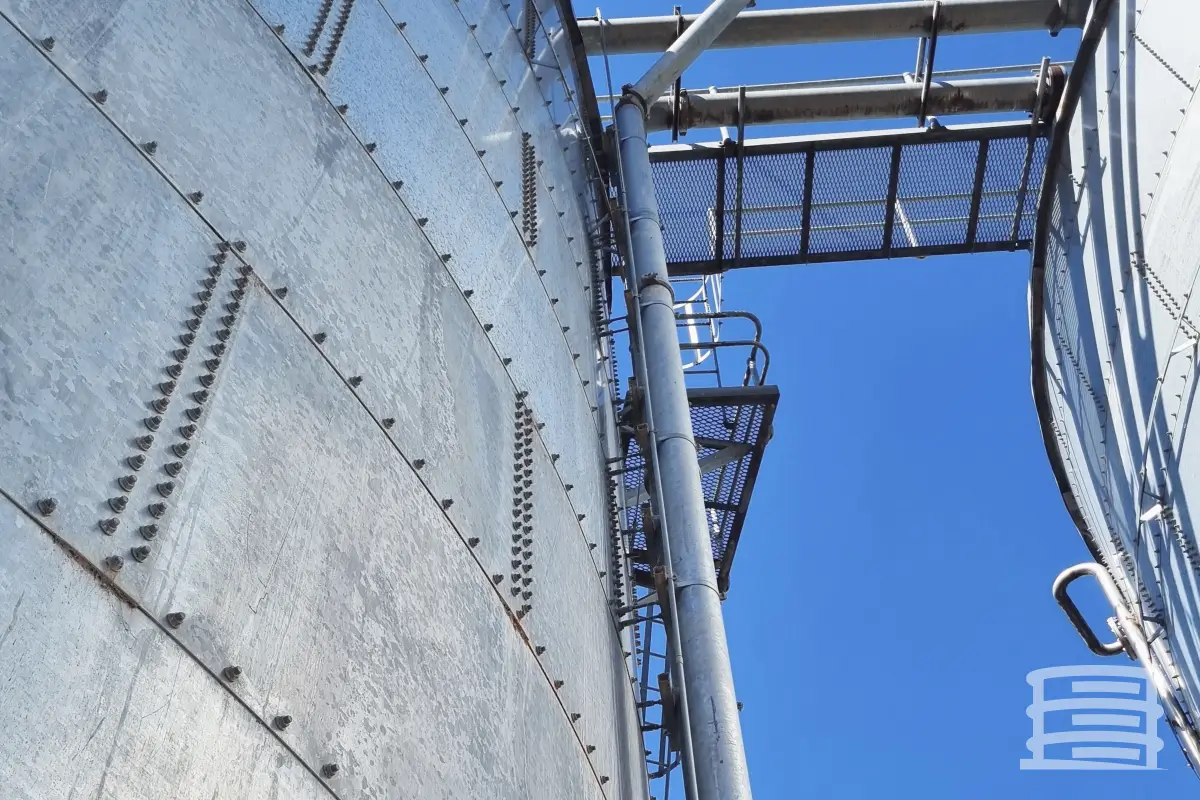Elevated water storage tanks fulfill two primary roles: they store water for fire protection and supply potable drinking water to a designated area or community. Using gravity, these tanks maintain consistent water pressure throughout the system. They are available in various shapes, sizes, and materials customized to meet specific distribution area requirements.
Here are four established benefits of positioning Elevated Water Storage Tanks:
- Enhances water pressure: The elevated placement of water storage tanks allows for the delivery of water with increased force. This principle of physics dictates that water moves under the influence of gravity, resulting in higher pressure as the tank’s height increases. Research shows that for each foot the tank is elevated above a hundred feet, there is an approximate 0.43 pounds per square inch increase in pressure.
- Eliminates the need for pumps: For households using stainless steel water storage tanks for drinking water, the installation of a water pump is often unnecessary. When the tank is positioned at an adequate height relative to the house plumbing, it can generate sufficient pressure on its own. Moreover, elevating the tank can provide ample pressure for water designated for gardening and other outdoor uses. Avoiding the use of a pump can lead to significant cost savings.
- Reduces the risk of contamination: Elevated tank placement serves a practical purpose by minimizing the entry of sediments and foreign objects into the system. Sediments that remain in water tanks for extended periods increase the risk of contamination and the growth of harmful pathogens.
- Facilitates easier maintenance access: Positioning tanks above ground level simplifies access for routine maintenance. Identifying and repairing leaks becomes easier in such setups. This is why many tank suppliers, like Firstank Philippines, provide complimentary ladders with their units for convenient access.
While it’s not obligatory to install water storage tanks at the highest point of a building, they can also be installed on the ground floor. However, this setup typically requires external assistance to direct water flow through pipelines effectively.
Choosing an Elevated Water Tank
When selecting the optimal elevated water tank for your needs, it’s vital to consider factors such as elevation, construction materials, capacity, dimensions, shape, and requirements for cold weather protection. A carefully planned installation of an elevated water tank ensures dependable and efficient water distribution throughout the service area.
Elevation: The elevation of an elevated water storage tank directly influences the water pressure experienced by the community. Towers must consistently provide at least 20 pounds per square inch (psi) of water pressure to users within the distribution system, although typical pressure standards often range higher, typically between 60 and 70 psi. It’s essential that the tank’s elevation is sufficient to maintain a steady minimum pressure level across all points within the distribution area.
Size and Capacity
When selecting a water storage tower, it’s crucial to consider both the tank’s storage capacity and anticipated usage. Projections of water usage, which account for factors such as community growth and emergency scenarios, are essential for determining whether the elevated water storage tank can adequately meet demand.
Design and Construction
Engineers must carefully assess several factors including intended use, water quality, pressure requirements, and environmental impact when determining the appropriate design and materials for a water tank. The choice of materials and design elements will be influenced by considerations such as soil quality, potential seismic activity, high winds, and extreme temperatures. It’s crucial to evaluate the installation site and potential challenges that may arise with field-erected tanks.
Significance of Cold Weather Protection
In subzero temperatures, an elevated water tank faces the risk of freezing, potentially cutting off the community’s access to a reliable water supply. To mitigate this risk, various methods for heating water tanks can be employed, including gravity circulation, steam coils, and direct steam discharge.

Applications of Elevated Water Storage Tanks
In addition to municipal water storage, elevated storage tanks offer a reliable solution for various other applications, including:
- Fire protection
- Process water
- Emergency cooling
Elevated Water Storage Tank Maintenance
Regular maintenance of elevated storage tanks is crucial to ensure optimal tank performance and water quality. Standards set by AWWA, along with federal, state, and local regulations, typically recommend inspecting water tanks every 3-5 years.
During inspections, professionals thoroughly examine the tank’s coating, joints, fixtures, surfaces, and foundation to verify stability and functionality. Any identified flaws or irregularities should be promptly addressed to prevent issues such as leaks, pressure loss, and water contamination from worsening. Regular testing of water quality is also essential to prevent sediment buildup and potential contamination caused by loose, leaking, or damaged tank components.
For localized service, our dedicated customer service team is available to assist you! We offer reliable services in Houston, Texas, and Long Beach, California, ensuring your water storage needs are met with expertise and care.
Call NFPA 25 Inspections by American Tanks at +1 800 656 0167
Or email at info@nfpa25inspections.com







